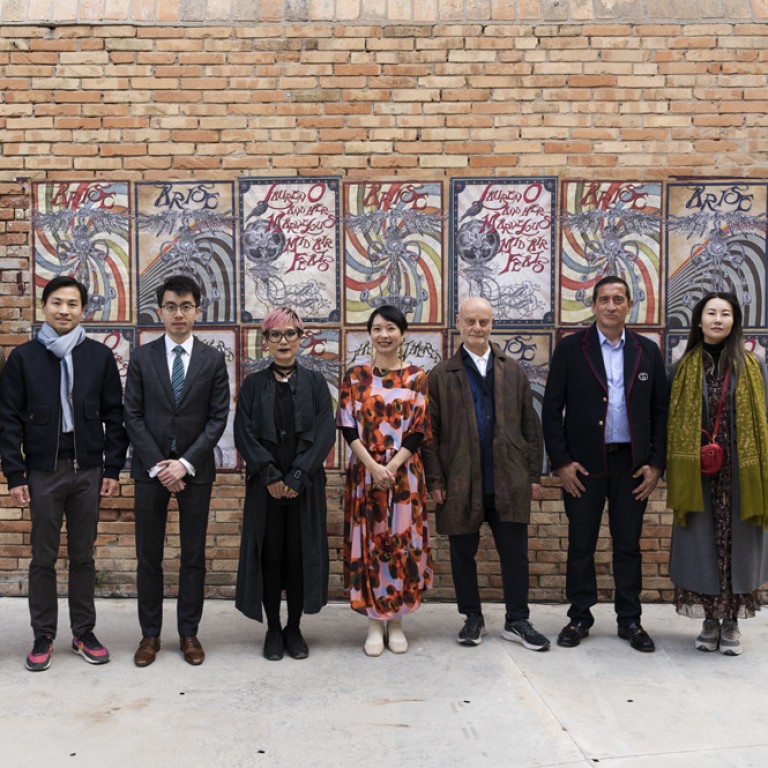
Venice Biennale 2022: Hong Kong opening impresses despite officials’ noticeable absence - event overview
- Blaming Hong Kong’s compulsory seven-day hotel quarantine, the Hong Kong Arts Development Council was not present at Venice for the first time since 2001
- The lone government representative looked quite ill at ease when asked his opinion of Angela Su’s exhibition that clearly reflects tensions felt in Hong Kong
The official Hong Kong contingent at this year’s Venice Biennale was peculiarly noticeable – by its absence.
Bigwigs from the government’s Home Affairs Bureau, and co-presenters the Hong Kong Arts Development Council and M+ Museum, would normally be at the official opening of the Hong Kong exhibition, host lavish receptions in one of the city’s historical venues, and be on hand to greet prominent curators, museum directors and the press during the fiercely competitive opening week crush.
Blaming Hong Kong’s compulsory seven-day hotel quarantine, the arts council did not have a presence at the world’s biggest art event for the first time since it launched the inaugural “China-Hong Kong Pavilion” in 2001.
M+, which has been a co-presenter since 2013, only sent Jenny Tam, an assistant manager who provided valuable on-the-ground support but stayed very much behind the scenes. Suhanya Raffel, director of M+ since 2016, had gone to the previous two editions of the biennale to promote the museum when it was still under construction, but did not attend the first Venice Biennale since the museum opened in November 2021.
Officialdom’s muted presence might have helped to keep the spotlight on Su’s impressive exhibition.
Warhol portrait of Marilyn Monroe fetches record US$195 million
News from M+ that day that it had withdrawn a number of politically sensitive Chinese paintings from display, including Mao Zedong: Red Grid No. 2 (1989) by Wang Guangyi and New Beijing (2001) by Wang Xingwei, which is based on a photograph taken by Liu Heung-shing during the 1989 Tiananmen crackdown, could have been an ill-timed distraction.
No one directly involved in the decision was present in Venice. Museum board member and donor of the paintings, Uli Sigg, was there, but he said “no comment”.
Instead, there was a relaxed group of M+ patrons who had flown themselves over, mingling casually with fellow guests who counted among them a significant number of artists, curators and a former Post cultural journalist who have moved away from Hong Kong in recent years.
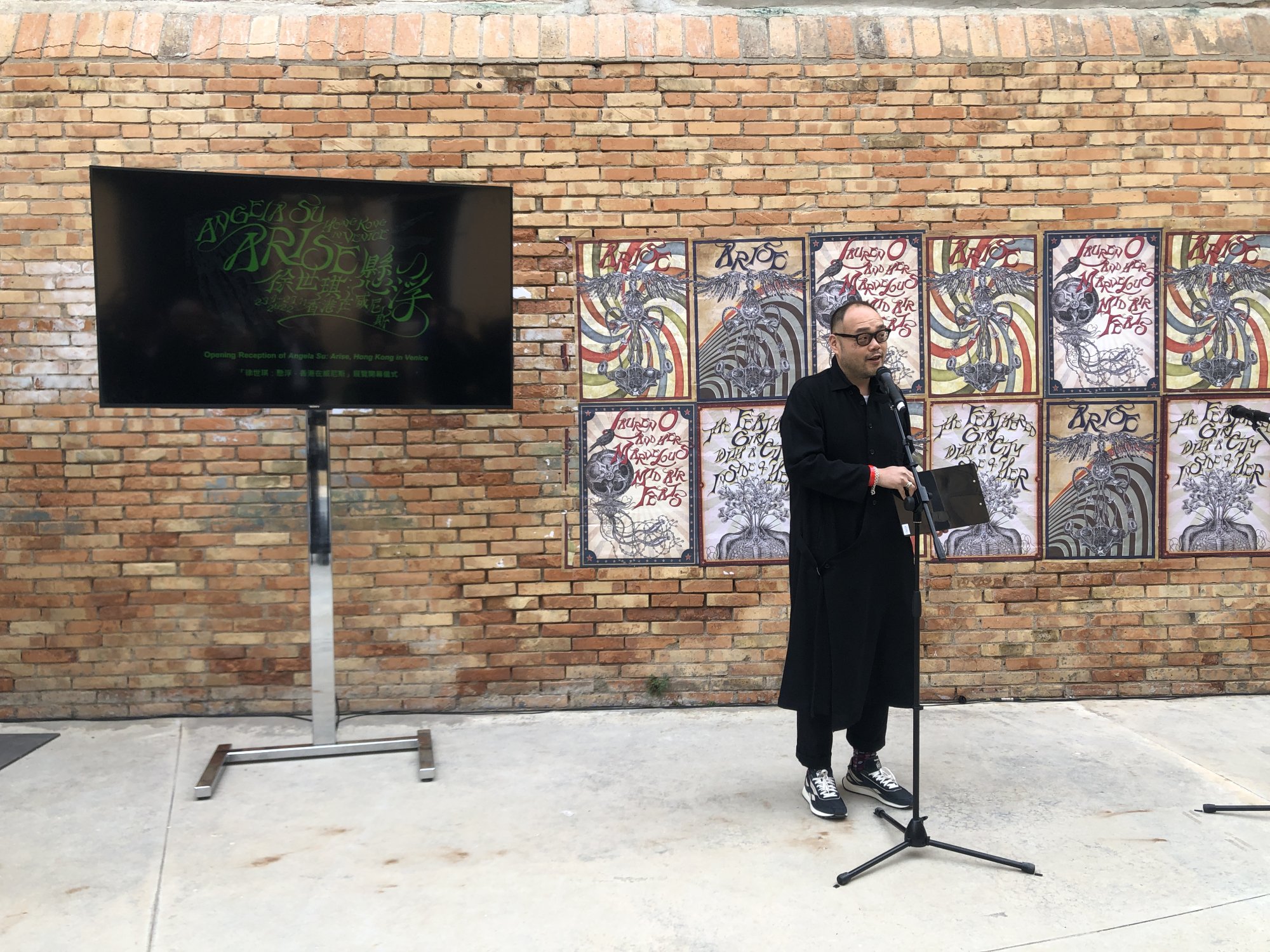
Among the creatives, Sara Wong Chi-hang, one of the artists involved in the 50th edition of the Hong Kong exhibition in Venice, travelled over from London, where she is currently based, while artist Oscar Chan Yik-long came from his new home in Helsinki. Yung Ma, a curator at London’s Hayward Gallery, was asked to be the master of ceremonies at the opening because he used to work at M+.
Many at the opening reception then went on to drinks organised in the same week by the Finnish and Romanian pavilions because they are both curated by old friends from Hong Kong: Christina Li, formerly of Spring Workshop in Wong Chuk Hang, who is now split between Hong Kong and the Netherlands, and Cosmin Costinas, the just-departing director of Hong Kong’s Para Site art space.
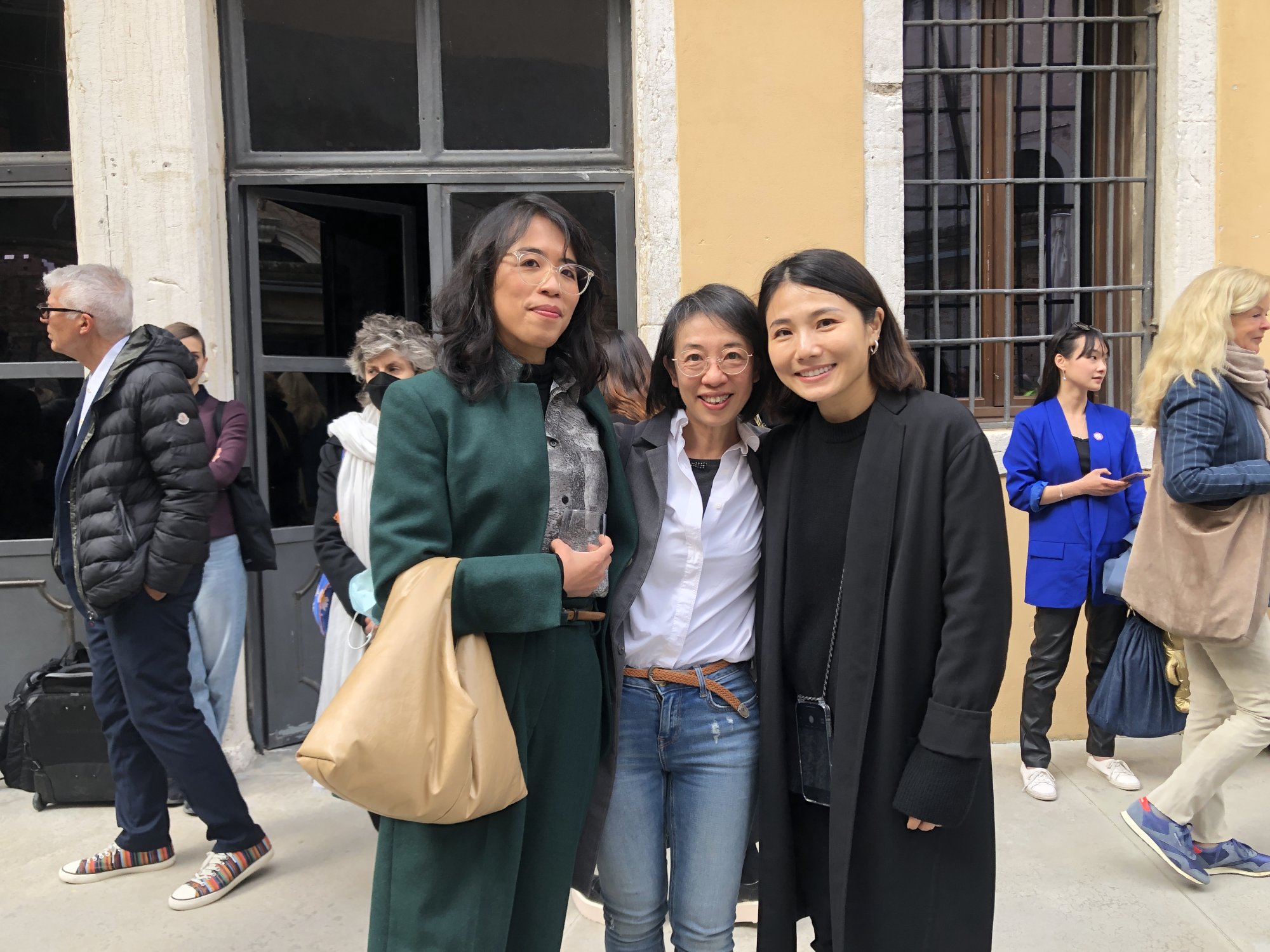
Another much-talked-about gathering was the party Stephen Cheng (owner of Empty Gallery) hosted on April 22 in honour of two of his artists whose works are included in the group exhibition “The Milk of Dreams” in the Biennale: Jes Fan and Tishan Hsu. (Separately, one of the highlights of the same exhibition is Lantau Island resident Zheng Bo’s stunning new video Le Sacre du printemps (Tandvärkstallen) (2021).)
Not that it was easy for everyone to get to Venice. The star of the Hong Kong show, Su, was stuck in Istanbul Airport for hours because her connecting flight was delayed. The curator Freya Chou’s flight was affected by the Berlin airport strike in March.
And Su’s gallerist Mimi Chun, owner of Blindspot Gallery, only decided to attend as soon as the Hong Kong government reduced the quarantine period to seven days from two weeks. She miraculously managed to book at the last minute the Palazzetto Pisani hotel on the Grand Canal for a celebratory dinner reception that measured up to the parties hosted by M+ in previous years.

Another Hongkonger, the well-known jewellery designer Wallace Chan Sai-ying, also overcame huge challenges to launch a new exhibition of his sculptures in Venice. “Totem”, a dramatic display of giant heads resembling the serene faces of Christian and Buddhist deities surrounded by symbols of war and destruction, is Chan’s second exhibition at the Fondaco Marcello after “Titans” in 2021.
Italy has followed much of Europe in relaxing social distancing so there was generally much merrymaking around town during biennale opening week. To some, such frivolity is representative of the elitism and insensitivity of a tone-deaf “art crowd” who travel from one champagne-flute-clinking event to another, seemingly unmoved by the current suffering in the world.

Waldemar Januszczak of The Times accused the art world of “fiddling while the world burns” after he watched a powerful, live-streamed appeal for help by President Volodymyr Zelensky.
“There are no tyrannies that would not try to limit art because they can see the power of art. Art can tell the world things that cannot be shared otherwise,” Zelensky said via video at the opening of “This is Ukraine: Defending Freedom”, an exhibition partly organised by the Victor Pinchuk Foundation in Kiev. (The foundation was forced by the war to cancel plans for a large exhibition of shortlisted artists of its bi-annual Future Generation Art Prize, which included Hong Kong artist Trevor Young, also represented by Chun and currently doing a residency with the Delfina Foundation in London.)
Ironically, not everyone who has been involved in the art biennale agrees with Zelensky’s conviction that art has a major role to play in society. Russian artist Kirill Savchenkov cancelled his participation in an exhibition at the Russian Pavilion because, as he said on social media, “There is nothing left to say, there is no place for art when civilians are dying under the fire of missiles, when citizens of Ukraine are hiding in shelters [and] when Russian protesters are getting silenced.”
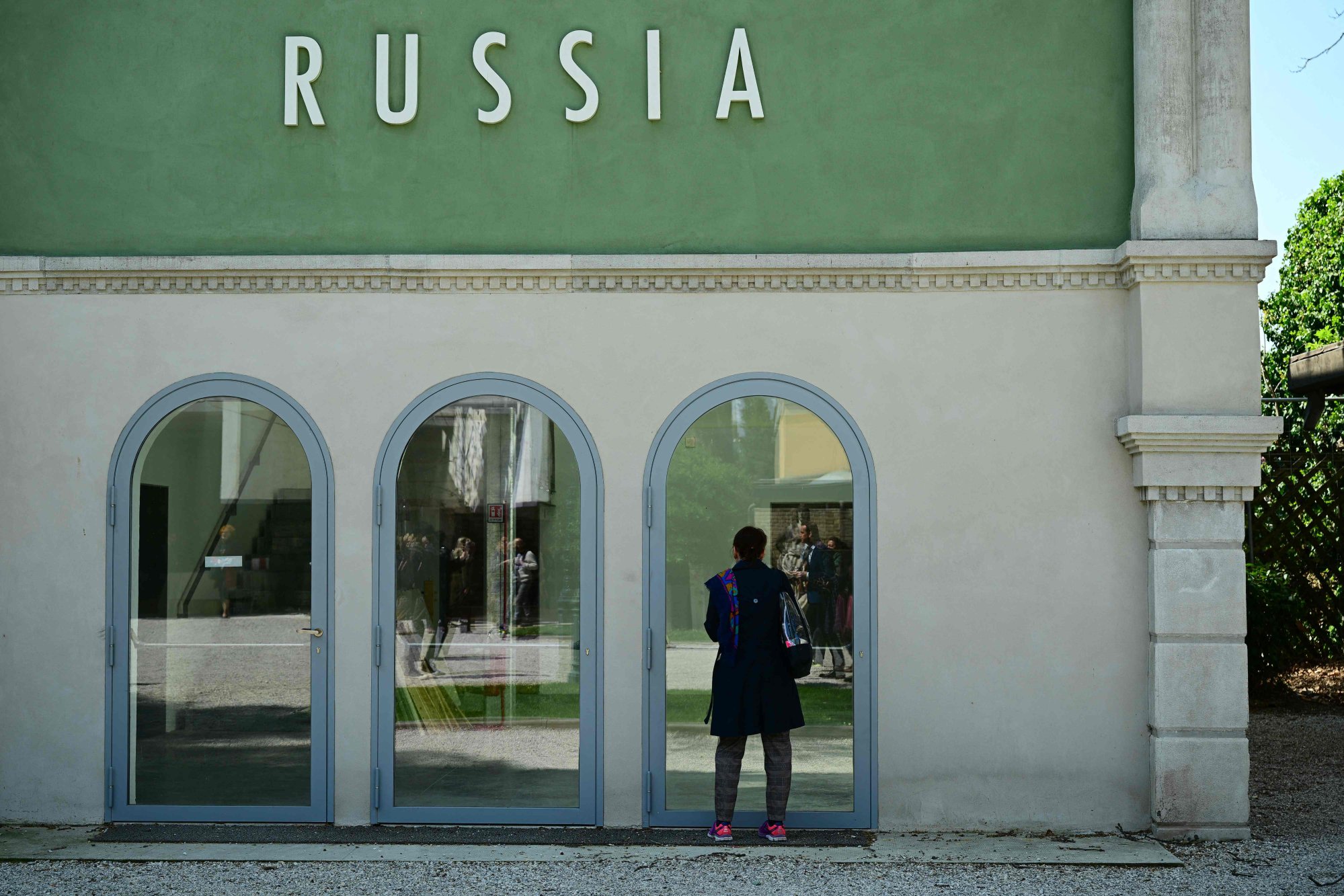
Can art change the world? And how political should art be? These are perennial questions that seemed to have leapt to the forefront of this edition of the biennale.
Su had to remind visitors, especially after her rousing opening speech urging active engagement with society and appealing against apathy and cynicism, that her Venice presentation set in the US civil rights movement was not a direct comment on the post-2019 protest reality in Hong Kong or in brave defiance of the new censorship regime under the city’s National Security Law.
Nonetheless, the lone government representative at the opening, from Brussels, looked distinctly ill at ease when asked for his opinion of an exhibition that indubitably reflects a lot of the tensions felt in Hong Kong at the moment.
Artist Angela Su to represent Hong Kong at 2022 Venice Biennale
Opening week visitors to the Hong Kong exhibition naturally thought it was about Hong Kong because the biennale, with its national pavilion system, means that exhibitions organised by a country or a territory are likely to be seen as representative of the place the artist has hailed from.
A lot of artists have chosen to create works that reference specific political conditions at home. Jonathas de Andrade at the Brazilian pavilion has used body parts as metaphors to address flaws in the country’s democracy and environmental concerns related to the government’s clearing of the Amazon to promote development.
When a national pavilion doesn’t engage in urgent and important discussion and debate, it fails to attract attention (witness the largely empty China pavilion), especially in the one edition of the biennale that has decided to tackle the culture war and identity issues head-on.
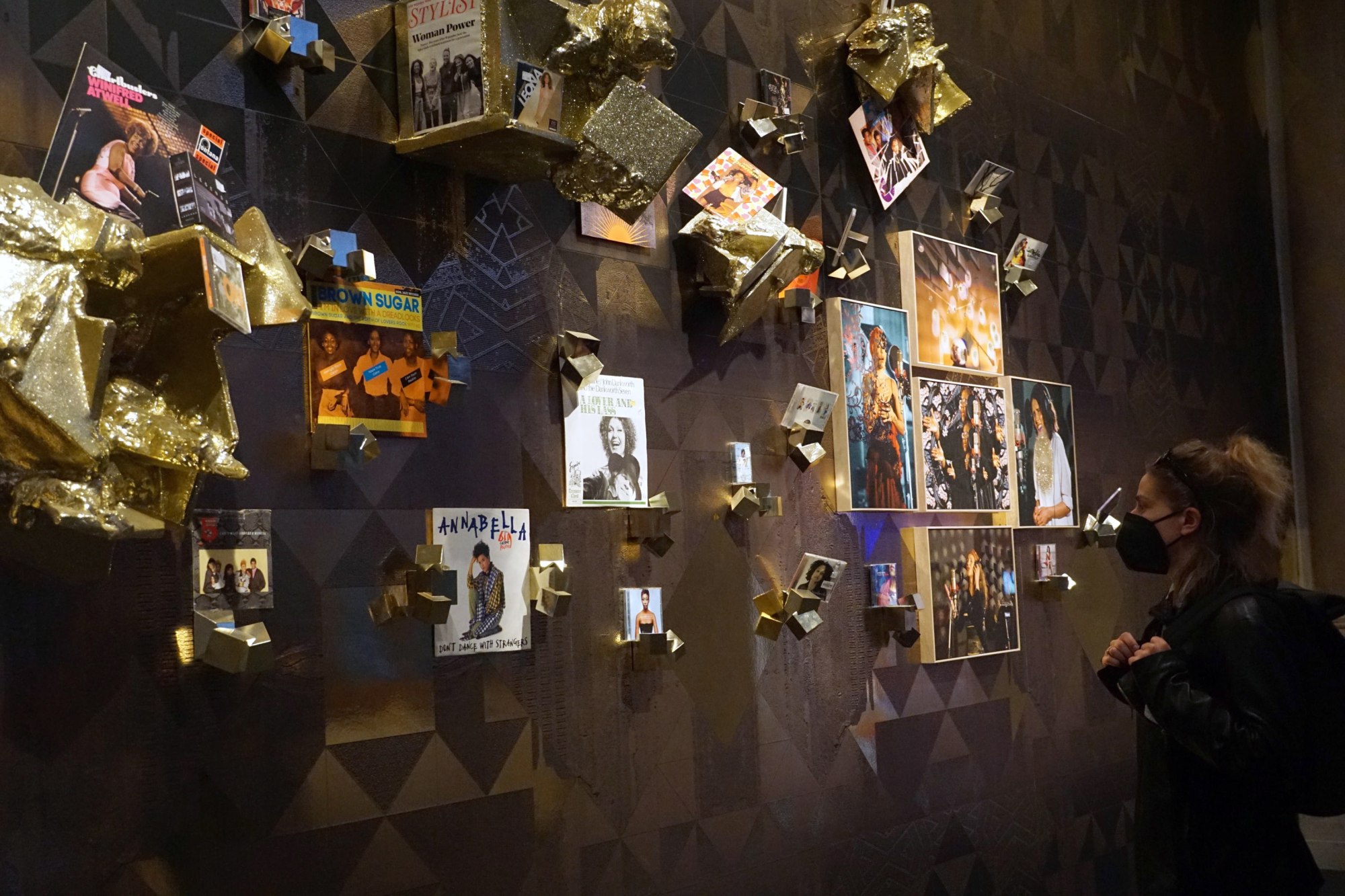
The biennale format has been much criticised for its tendency to promote large, expensive and spectacular art simply because the scale makes it hard for smaller, quieter and more nuanced art to grab people’s attention.
And this edition seems to have more than its fair share of spectacles, both inside and outside the biennale grounds. Anselm Kiefer at the Doge’s Palace and Anish Kapoor at the Gallerie dell’Accademia di Venezia are probably the most extreme examples of over-the-top displays.
The creator of Hong Kong’s beloved rubbish monster Lap Sap Chung
But Venice is still hard to beat in terms of bringing the world together. With 80 national pavilions – with the Republic of Cameroon, Namibia, Nepal, Sultanate of Oman, and Uganda taking part for the first time – this long-in-isolation Hongkonger, for one, experienced a burst of joie de vivre just being able to meet people from all over, face to face.
Globalisation may be under fire, but contemporary art is steeped in it, as shown by the sheer internationalism of the Hong Kong opening reception. And here in Venice, we see artists around the world carrying similar concerns or even adopting similar strategies to create a visual narrative of their shared time on earth.
Filling in the gaps in history with imagined scenarios is a common strategy at this year’s Venice Biennale, where the central theme is taken from the Surrealist artist Leonora Carrington’s idea of a magical world where life can be transformed through imagination alone.
In the French pavilion, for example, Zineb Sedira weaves her own fiction into reality and addresses the question of authenticity by tapping into films of the 1960s and ’70s made before and after Algeria’s independence from France.
And that’s Su’s method, too, with her fictional tale of a 1960s anti-war protester. Both Su and Sedira’s exhibitions also feature a disco ball as they urge us all to face challenges with a spring in our step.
Coincidence? Or simply emblematic of the shared fate and challenges of our time?
After a week of bumping into each other in the Via Garibaldi, the Hong Kong crowd bid each other farewell and flew home in different directions. But a few have already promised to meet again at Documenta and Art Basel in June.

